In February 1967, Mr Michael Jagger and Mr Keith Richards of
the popular beat-combo the Rolling Stones (and their art-dealer chum, Robert Fraser) were arrested for the
possession of drugs when eighteen police officers raided Redlands, the country
home of Mr Richards. The prosecution case against them was based on the few amphetamine tablets
found at the scene and the smell of cannabis in the house, which might, or
might not, have really been the scent of burning incense.
 |
| Mr Richards at his Redlands home, accompanied by Mr Jagger |
There were four tablets in Jagger’s
jacket, and Fraser had four more in his pockets, and so all three men were charged
with, and found guilty of, possession of Class A drugs. Fraser was sentenced to six months
imprisonment, Jagger to three months and Richards to twelve months, which many
people thought was a little too excessive for them having a few pills about
their persons. William Rees-Moggs, editor of The Times newspaper, wrote
an editorial Who Breaks a Butterfly on a Wheel?, rhetorically asking if
these famous musicians would have received the same treatment if they had been
just ordinary citizens. Was it not the case that they were being made an
example of, that they were getting what was coming to them?
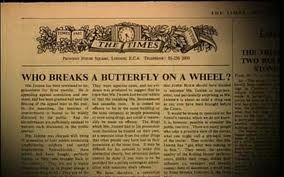 |
| William Rees-Moggs - Who Breaks a Butterfly on a Wheel? |
On appeal, the
sentences were reduced to conditional discharges; Jagger had spent three nights
in gaol and Richards one night (Fraser’s case was slightly different, he later
pleaded guilty to the possession of heroin and served six months hard labour).
Rees-Moggs editorial headline is a slight mis-quotation of a line from
Alexander Pope’s satirical poem, Epistle to Dr Arbuthnot, which actually
reads, “Who Breaks a Butterfly upon a Wheel?”
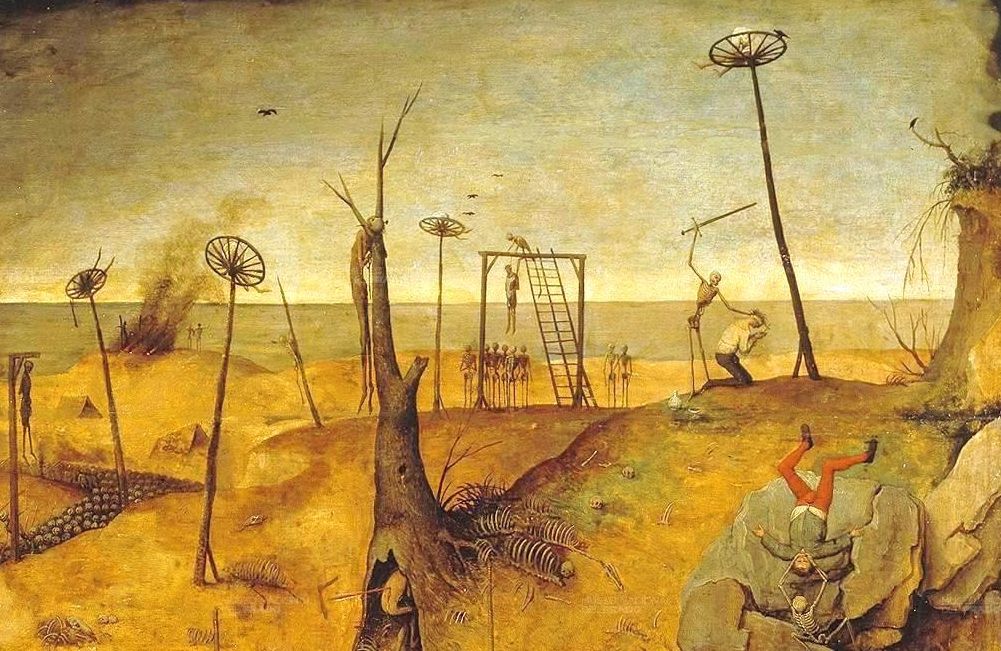 |
| Detail - Pieter Brughel - The Triumph of Death |
It is a phrase that means
‘Why expend such force on such a fragile victim?’; in effect, why use a
sledgehammer to crack a walnut? I have written earlier this month (see here and the following half dozen posts) about various
methods of capital punishment used in the past and had intended to add a piece
on breaking on the wheel but thought twice about it. However, in the light of
yesterday’s post, which ended with a mention of Francesco Arcangeli’s
execution, I have had a rethink of my second thoughts (I think).
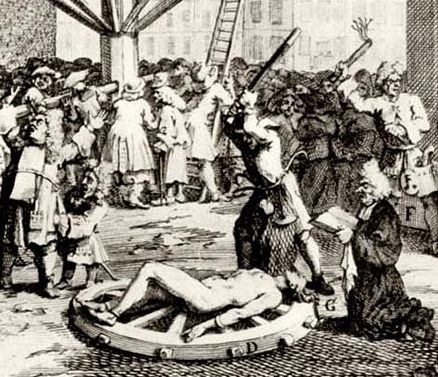 |
| Breaking on the Wheel - detail from Hogarth's South Sea Bubble |
Breaking on
the Wheel was a dreadful punishment (not that beheading, pressing, hanging, etc
aren’t, but bear with me), with its origins lost in history – Aristophanes
mentions a torturer’s wheel in his Lysistrata (411 BCE), and Athenaeus,
Lucian and Josephus, amongst other classical writers, also refer to the wheel.
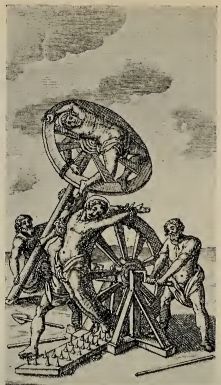 |
| Breaking on the Wheel |
There were a variety of ways that wheels were used as methods of torture and
execution, from simply driving a cart over a person’s body, tying them to the
outside rim of a wheel and rolling them along, tying them to the spokes and
rotating the wheel, or tying them to the spokes and breaking their limbs by
striking them with a club or rod.
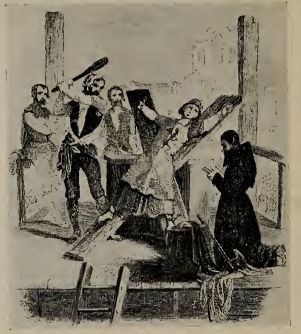 |
| Breaking the long bones with big stick |
A variation was to fasten a person inside a
barrel lined with nails and roll that along the ground, or wrap them around the
outside of the barrel and roll them over spikes or sharp rocks.
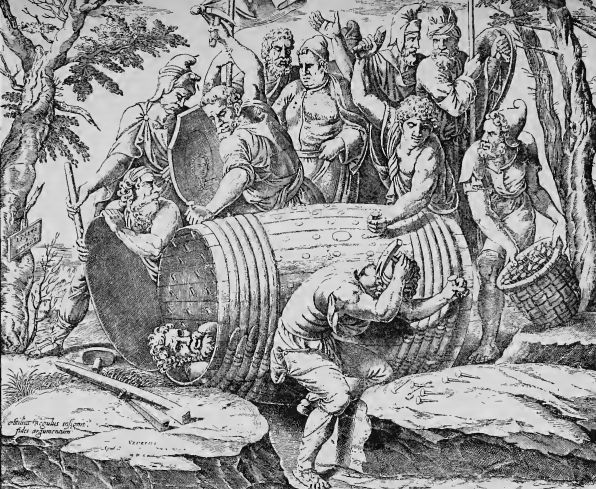 |
| Nailed into a nailly barrel with nails |
By far the
commonest method was to tie the victim to the spokes of the wheel, or to a pair
of beams in an X shape (the St Andrew’s cross), and strike the long bones of
the arms and legs with a sledgehammer, a cudgel or an iron bar, ending with the
coup de grâce (blow of mercy) to the stomach.
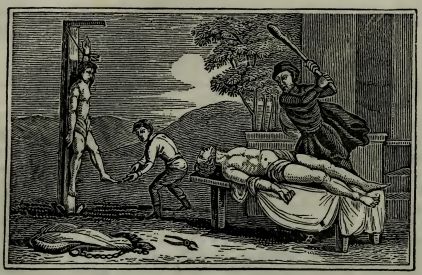 |
| Breaking the long bones with a big stick [Two] (oh, and pulling toe-nails out too) |
At times, a judge might
sentence a criminal to remarkably cruel torture, as in the case of the
eighty-six year old Jean Calas of Toulouse, who was suspected of being
complicit in the strangling his own son Anthony, in 1761, and to make him
reveal the names of his accomplices was sentenced to be,
“… broken alive upon the wheel, to receive the last stroke after he had lain two hours, and then to be burnt to ashes.”
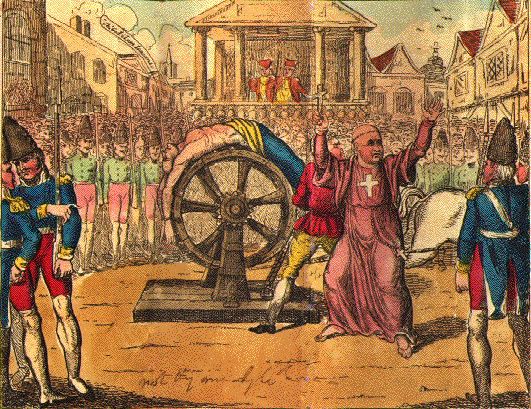 |
| Jean Calas broken on the wheel - 1761 |
Although rare, breaking on the wheel was used
in Britain, as in the case recorded by Robert Birrel in his Diary,
“Robert Weir broken on ane cart-wheel, with ane coulter of ane pleuch, in the hand of the hangman, for murdering the Laird of Warriston, quhilk he did, 2 Julii 1600.”[‘ane coulter of ane pleuch’ is ‘a coulter of a plough’, a coulter being the knife that cuts the soil ahead of the ploughshare.]
 |
| A variety of ways to kill people - Spot the Breaking on the Wheel |
Of all
the people whose names are associated with the wheel, surely the most familiar
is that of St Catherine of Alexandria, which is somewhat ironic as there is no
evidence whatsoever that she ever actually existed. The legend is that
the young pagan Catherine lived in Alexandria, where her studies introduced her to
Christianity, to which she then converted. When the emperor Maxentius began his
persecutions, an eighteen-year-old Catherine went and began to rebuke him for
his tyranny.
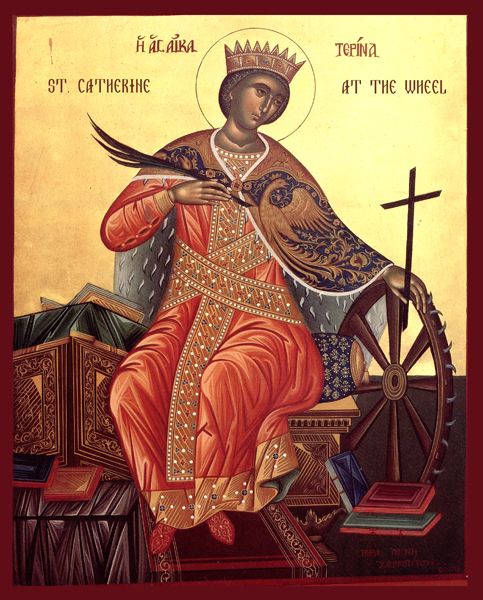 |
| St Catherine of Alexandria (with her wheel) |
He could find no defence to her arguments so sent for fifty
philosophers, none of whom could answer her either, so he had the lot of them executed.
He offered to marry the beautiful maiden but she refused him, claiming she was
the Bride of Christ, so he had her flogged and thrown into gaol, where she was
visited by his wife and an army officer, both of whom were converted, along
with two hundred soldiers assigned as guards. Maxentius had the whole bunch of this lot
executed too, and Catherine was sentenced to be killed on a spiked wheel. When she
was placed up it, it miraculously broke into pieces, the flying pieces of which
killed several onlookers, so Maxentius had her beheaded with a sword instead. Quite why the sword didn't burst into shards and take out a few more pagans is something left to your imagination (maybe Christ thought it was safer for the rest of creation if his Bride was just that little bit nearer to him).
 |
| Catherine's Wheel |
The story is
now best remembered through the firework called the Catherine Wheel.
No comments:
Post a Comment